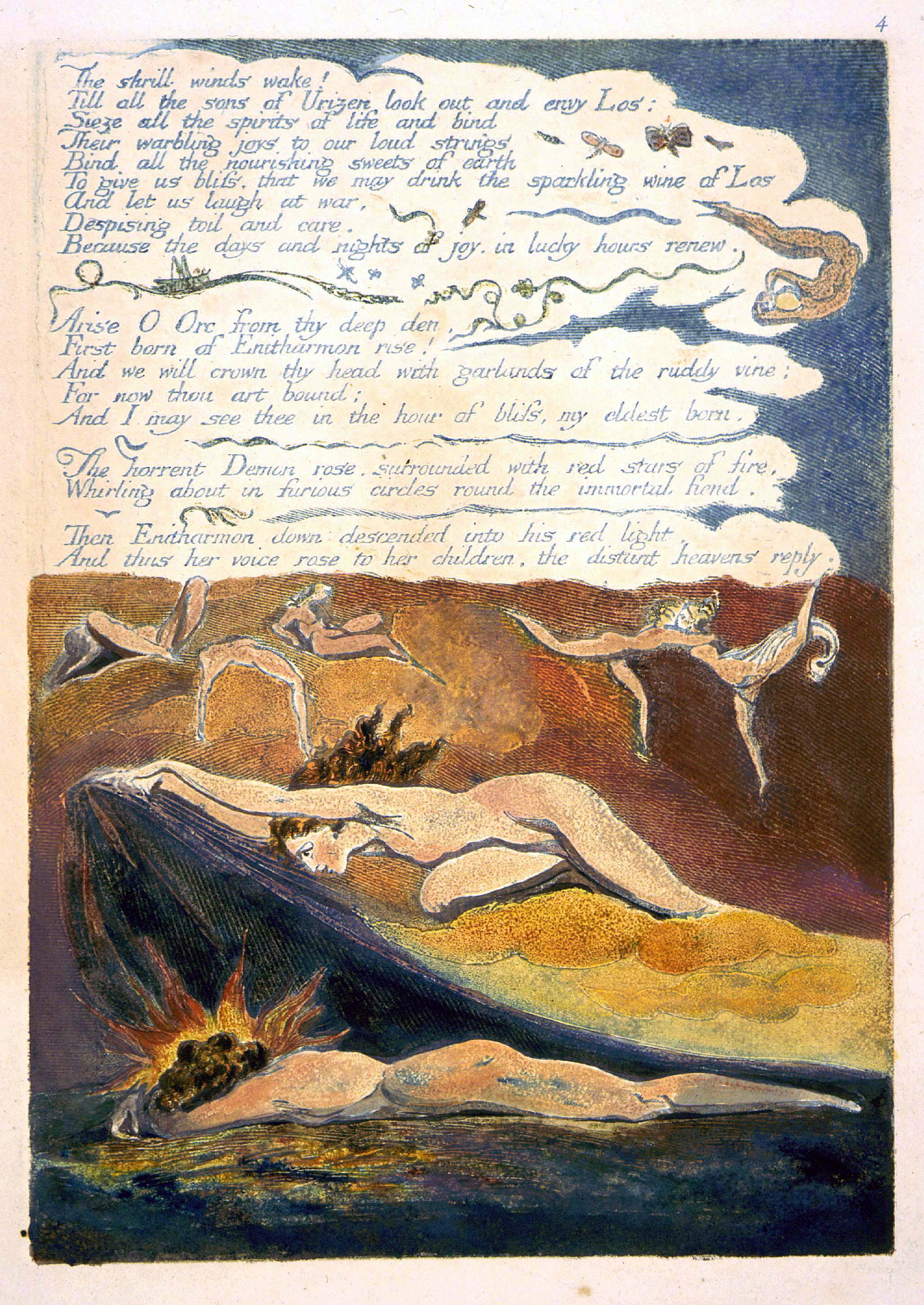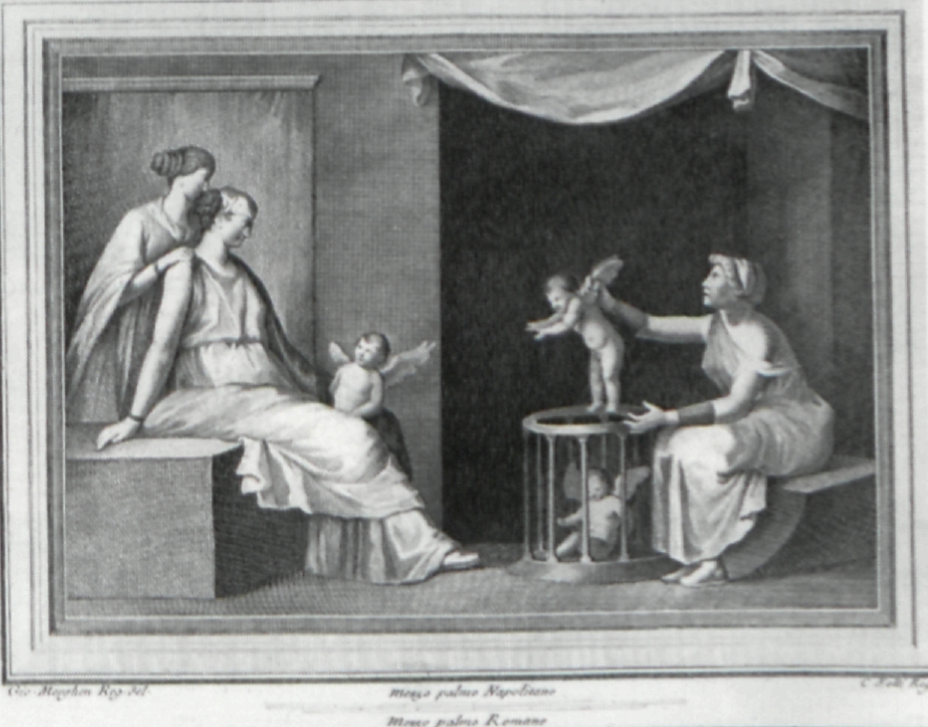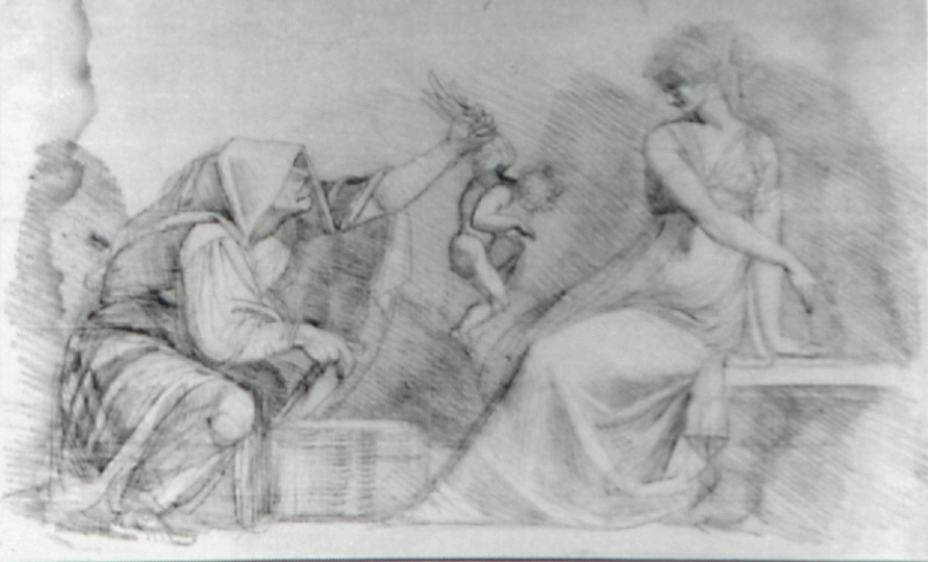ARTICLES
Orc under a Veil Revealed: Family Relationships and their Symbols in Europe and The Book of Urizen1↤ 1 This essay was originally read at BARS (British Association for Romantic Studies) 6th International Residential Conference, Keele University, in the summer of 1999. I acknowledge with gratitude a grant from the English Literary Society of Japan which enabled me to give the presentation at the conference.
Introduction
Attention has often been drawn to the veil of Enitharmon (illus. 1a, 1b), representing her relationship to her child, Orc; and its symbolic importance to Blakean mythology is generally agreed upon. But the attendant discussion has produced several, often problematic, arguments. To understand the deeper significance of the imagery, we have to re-examine Orc’s figure in the light of a reconsideration of the traditional mythic sources which throw light upon the meanings of family relationships. These relationships, which provide Blakean mythology with their interlocking dimensions, in effect systematize his idiosyncratic cosmology. His mythology is activated especially by the interaction of certain names which are identified with each character: namely, Los as father figure, Enitharmon as mother, and Orc or Oothoon as child. Elucidating the significance of family relationships thus helps us realize how Blake’s proto-mythological framings are fundamentally based on certain family relationships, extending from the earlier works—such as America or Visions of the Daughters of Albion—all through to such later works as Vala, or The Four Zoas and Jerusalem. More important, perhaps, attention to these relationships can throw light upon transitional works, particularly, Europe and The Book of Urizen. Here in particular, the relationships, when more deeply analyzed, enable us to take a fresh look at Orc, to recognize Urizen with Jupiter as a greater father figure, Los with Vulcan as the father, or Enitharmon with Venus as the mother of Orc. I wish to argue here that this new light reveals the so far hidden position of Orc’s figure as the son between Vulcan and Jupiter, i.e., Cupid. It is not common to see a Cupid figure implied within the characterization of Orc; but it is my contention that this construction leads us to discover a more significant profundity which Blake intends in the figuration of Orc. The discussion will work towards the ultimate aim of encouraging Blake readers to reinterpret the creation of Orc as a challenge to
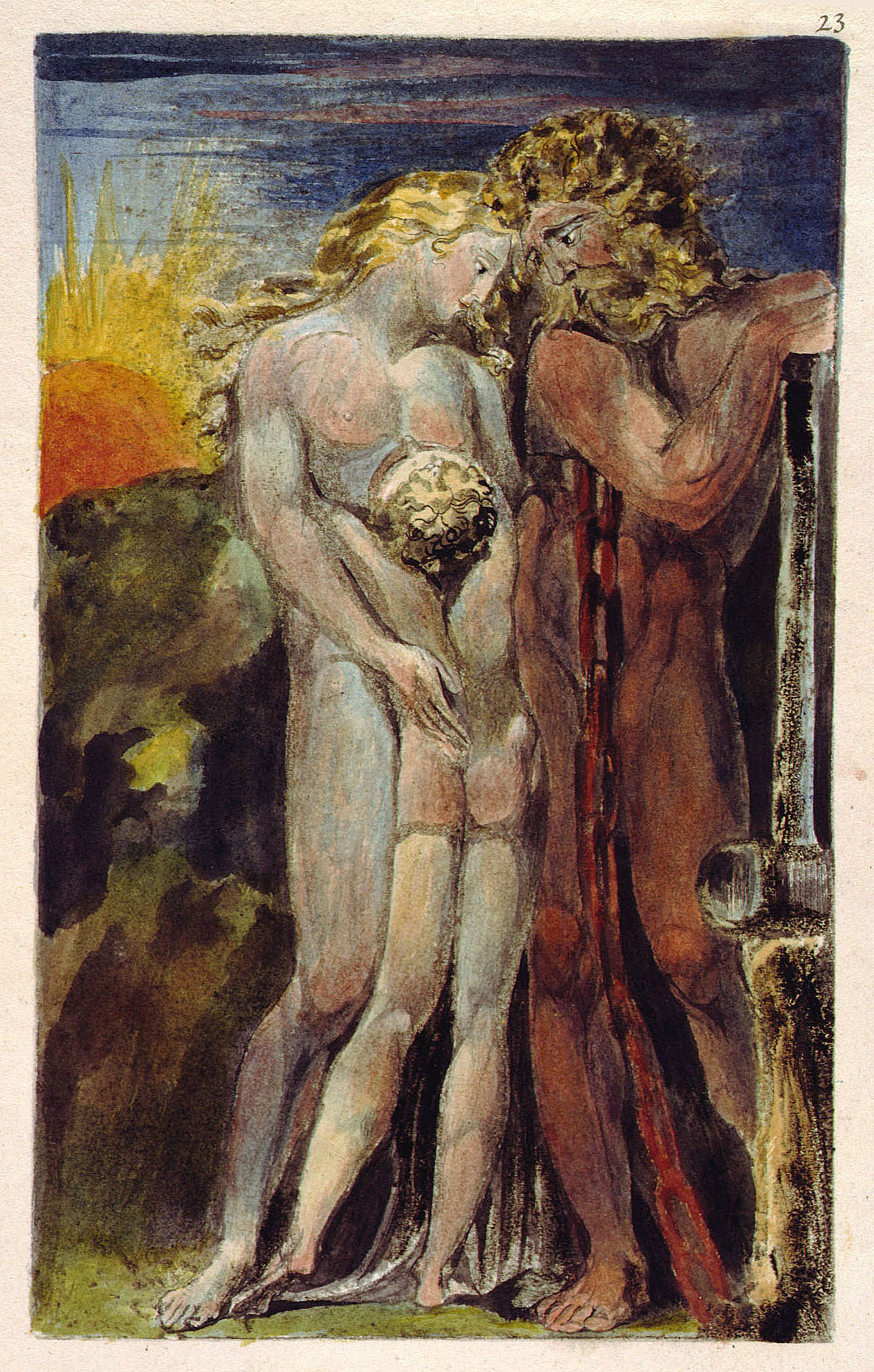
[View this object in the William Blake Archive]
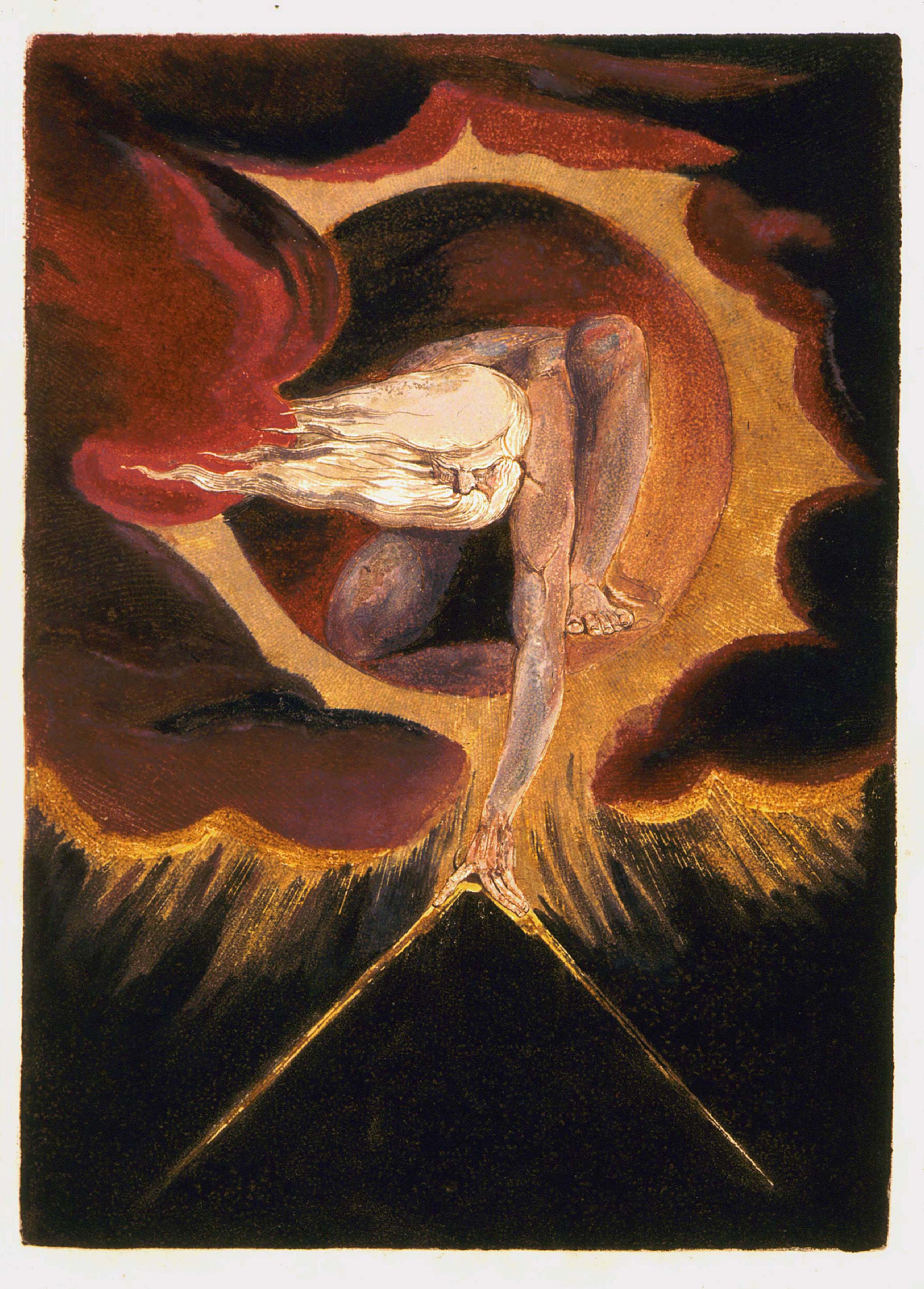
[View this object in the William Blake Archive]
Infant/Infinity Compassed
A rough sketch of the Ancient of Days in the Notebook is an original design of the frontispiece to Europe (illus. 2).2↤ 2 The Notebook of William Blake 96. The original sketch contains an inscription of five words, quoted within the following lines cited from the Prophecy: ↤ 3 Blake texts are quoted from the Erdman edition, cited as E followed by the page numbers.
. . . who shall bind the infinite with an eternal band,
To compass it with swaddling bands? and who shall cherish it
With milk and honey?
[E 61: italics mine3]
The act of “bind[ing] the infinite” or “compass[ing] it” has provoked several interpretations in the history of Blake studies. One major interpretation derives from the point of view which sees it as a biblical allusion to the charting out
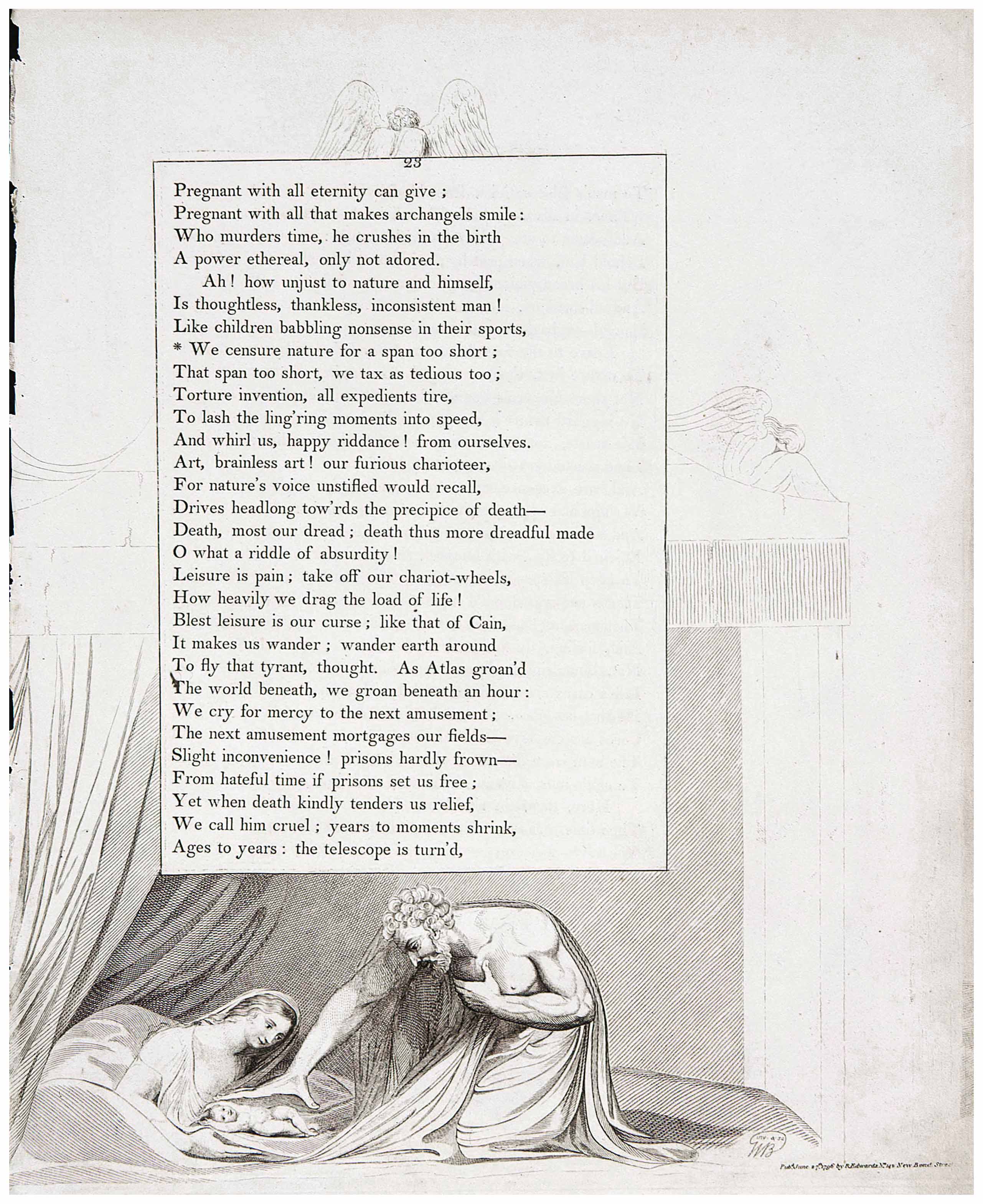
[View this object in the William Blake Archive]
Although the act of encompassing has long been thus understood in conceptual terms, in the following discussion I want to draw the point of emphasis, at least at first, away from this to the question of the form of the compasses as an iconic symbol. To collate the various instances of the form, a subject seemingly oft noticed but little investigated, will illustrate with fresh clarity how a degree of repressive authoritarianism is elaborated within Blake’s connotative vocabulary.
To try to understand the elaboration more deeply, let us examine Blake’s illustration to Edward Young’s Night Thoughts (illus. 3: later used as the plate representing Night the Fifth of The Four Zoas). This illustration seems to allude to the holy family. However, we may explain the parent figures, especially the father figure shown in an encompassing gesture, as Blake’s ironical protest against the repressive nurture of infants.
begin page 38 | ↑ back to top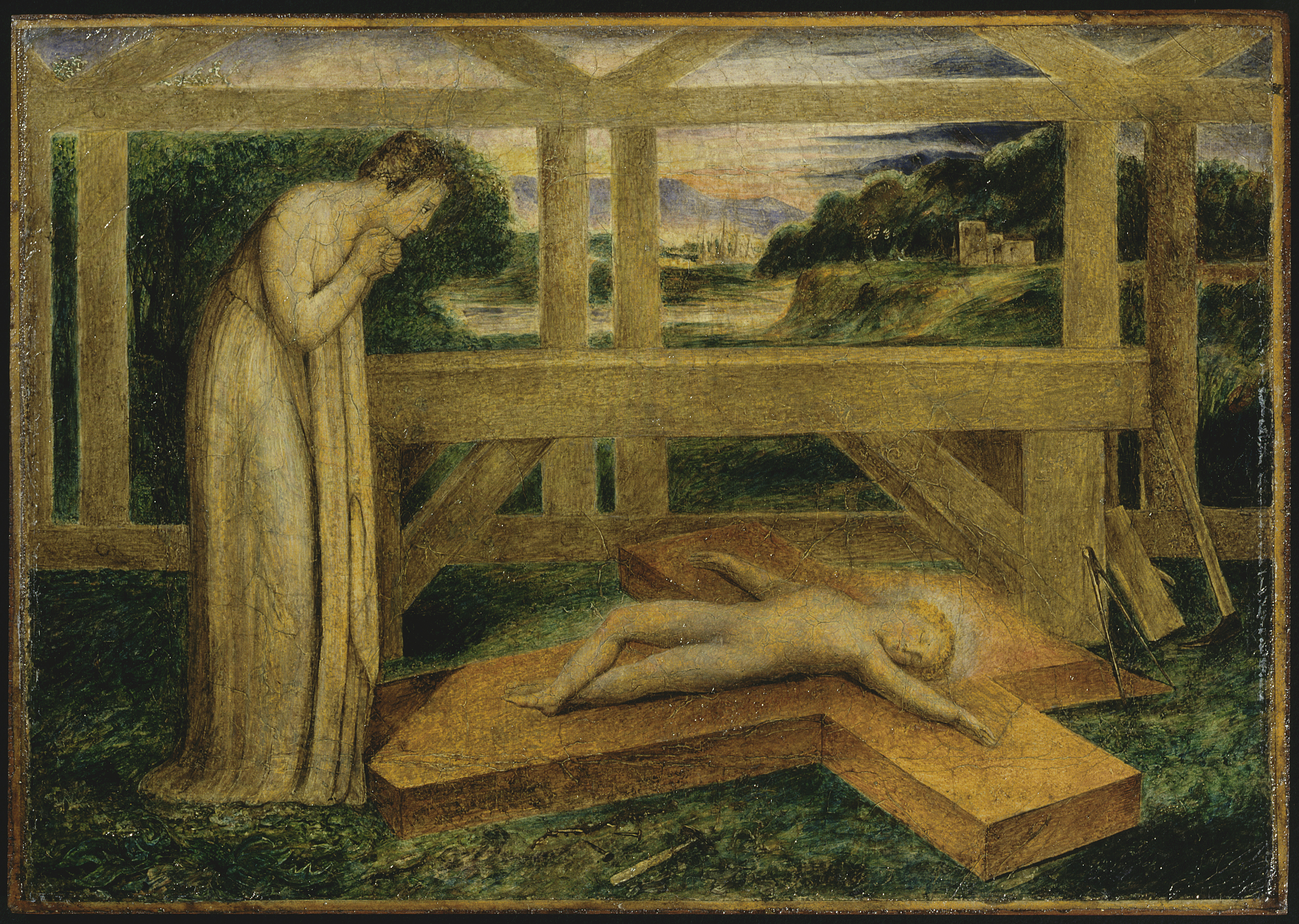
[View this object in the William Blake Archive]
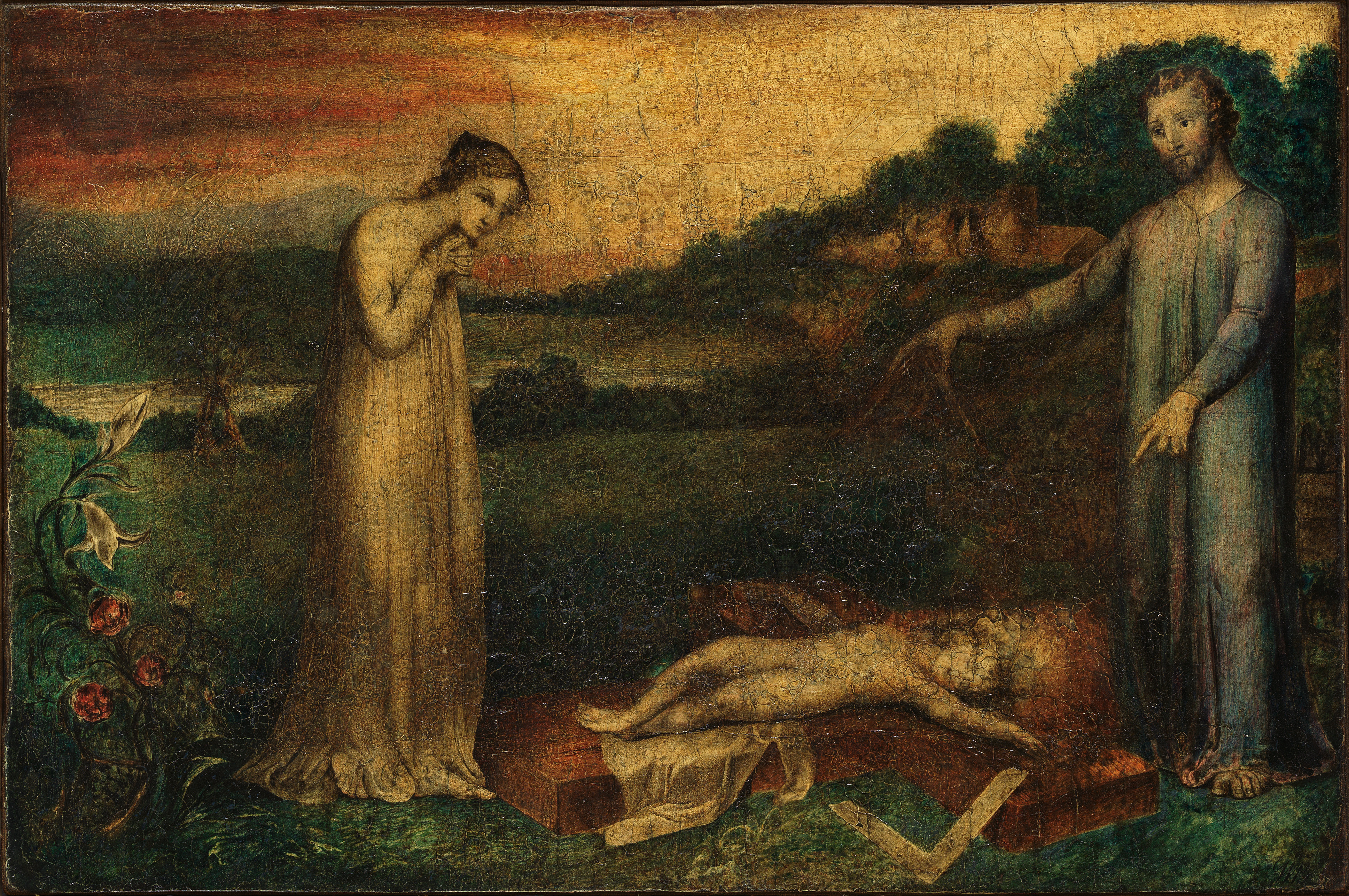
[View this object in the William Blake Archive]
As for the image of encompassing the infant, we may well remember that the image of compasses itself is a well known signifier in the iconography of the Christian tradition; when God as creator is compared to a carpenter, the image of compasses can represent him in the role of designer or builder of the world, and the meanings of the icon are in this same tradition, further elaborated to identify Christ as a carpenter. Interestingly, this development of the Christian connotation of the image can help explicate some of Blake’s illustrations of the biblical stories, such as, for example, The Christ Child Asleep on the Cross (illus. 4a). In the illustration, the Christ child is sleeping on a cross beside a scaffolding of timber, and just next to the cross a set-square is placed which seems to be emphasized by another pair of compasses leaning against the woodwork. The importance of this compasses icon gains in emphasis through his additional use of the shape in another illustration on the same theme (illus. 4b). In this illustration Joseph holds the compasses over the Christ child. We can decode this image conventionally, i.e., as an implied prefiguring of the Child’s future as the one begin page 39 | ↑ back to top
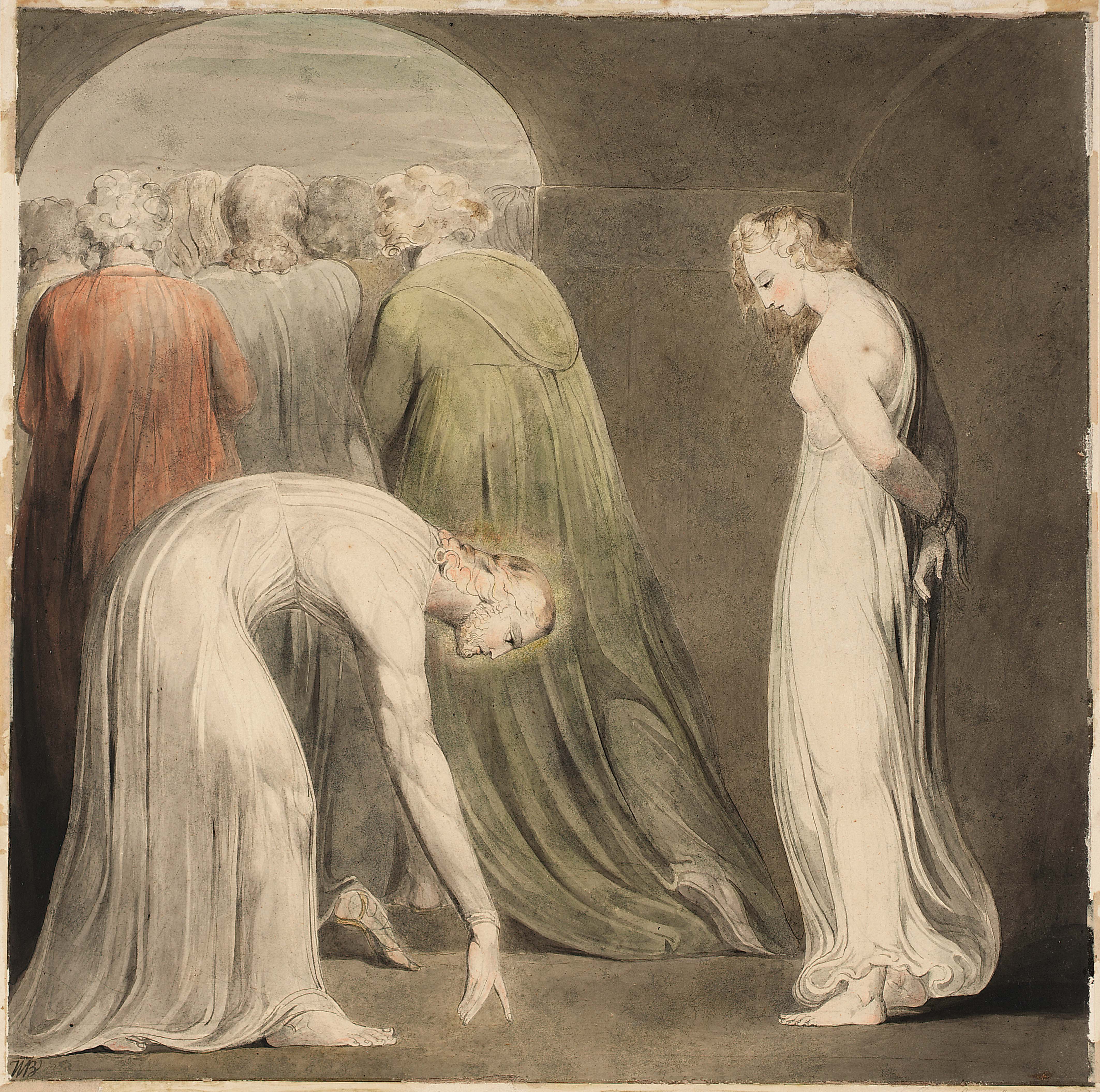
[View this object in the William Blake Archive]
Curiously, this kind of emphasis on the image of compasses as denoting circumscribing authority may be deepened and enhanced by considering Blake’s illustrations of the nativity. These offer confirmation of ironic interpretations of the imagery through the repeated appearance of the shape of compasses in the six illustrations to Milton’s On the Morning of Christ’s Nativity. One advocate of such a reading is Michael Tolley, through whose research we are in a better position to appreciate Blake’s ironical attitude towards the Miltonic understanding of the infant Christ (145). Tolley’s interpretation is as follows:
. . . throughout Europe we find Blake looking very closely at Milton’s Hymn[On the Morning of Christ’s Nativity] and it is not going too far to say that Europe is primarily a reworking of Milton’s poem. (119)
If, with this explication in mind, we assume that Blake here ironically indicts this type of Miltonic-Newtonic creator, we can go on to recollect Milton’s account concerning God’s use of “the golden compasses . . ./. . . to circumscribe / This Universe and all created things.”6↤ 6 Paradise Lost, VII, 225-27. Once we can register Blake’s resentment against the Miltonic notion of a rational great-father (creator figure), one to be regarded in the light of a confining and repressive power, we can be more confident in detecting the irony ingeniously implied by the compasses-like shape of the roof of the stable depicted in the illustrations of the series (illus. 6a and 6b).
A consciousness of this irony enables us now to take a fresh look at the frontispiece of Europe (illus. 2), where we might consider the form of the cloud as suggesting a womb from which a potential infant might just have been given birth and whom Urizen is now compassing.7↤ 7 See Tolley’s helpful argument, though my ultimate argument is different from this opinion; “The birth of Christ represented the crucial challenge to Urizen’s compasses” (119). This possibility may lead us further to identify the infinity, i.e., the unseen object below the compasses, with Orc as the potential infant. However, an Orc whose symbolic meanings extend beyond those connoted by the image of Christ leads us to further investigation of, in particular, the role of Los and Enitharmon as Orc’s parents as well as reproducers of the Urizenic power of confinement; and this is the topic to which I now turn.
Parents: Los and Enitharmon
The Greek ουριζειν (“to limit”), from which Kathleen Raine and others prefer to derive the name of Urizen,8↤ 8 See Damon 419. may precisely summarize his character, a circumscriber. That Los as a father of Orc cooperates with Urizen so as to reinforce the confinement initiated by him is discernible, for example, in the last illustration of Jerusalem (illus. 7), where Los holds compasses-like tongs in his left hand. In fact, we might better characterize Los by designating him as a sustainer, or a reproducer, of Urizenic domination, since, as this plate shows, Los seems to be trusted with the charge of confining Orc.9↤ 9 This is in contrast to The Book of Urizen, where “Urizen explored his dens/ Mountain, moor, & wilderness,/ With a globe of fire lighting his journey/ A fearful journey, annoyed/ By Cruel enormities . . .” (E 81). The hammer in the other hand, for use in begin page 40 | ↑ back to top binding Orc in chains on the mountain, emphasizes his character as a blacksmith.10↤ 10 The serpent temple illustrated in the background suggests by implication the idea that a blighting (and also blighted) system is sustained by the priestcraft of authoritarian regimentation. As for the serpent temple, cf. Dörrbecker 273-74; Mee 92-97.
In the same plate appears another supporter of Urizen, Enitharmon, who is a mother figure of Orc. She is shown unwinding the “aching fibres of Los” (E 247),11↤ 11 Cf. Erdman’s The Illuminated Blake 379. who seems bound up in what looks very much like a version of the concealing veil, whose function is depicted in the illustration of plate 4 of Europe (illus. 1a), where it has the purpose of concealing Orc.12↤ 12 As for the argument as to whether she is concealing or revealing Orc in this plate, see Dörrbecker 269-70; Erdman’s The Illuminated Blake 162; and Chayes 218 (“Above him [Orc], kneeling on a cloud, a nude woman who is probably Enitharmon leans forward in a sweeping gesture and lifts a cloth to reveal him”). Beer reproduces a Raphael Madonna and compares it to the plate, describing the Christ child under the veil as “[t]he Jesus who has been veiled by the Church” (Beer 374 and plates 53, 54). As the statement of the nameless shadowy female implies—she is a vague figure of Oothoon, the other rebellious child of Los and Enitharmon—Enitharmon is another figure of confinement: “Ah mother Enitharmon! / Stamp not with solid form . . .,” “thou dost stamp them with a signet.”13↤ 13 See also a similar image in Visions of the Daughters of Albion: “Stampt with my signet are the swarthy children of the sun” (E 46). The description of her as a dominant queen figure, “Now comes the night of Enitharmon’s joy” (E 62), may be associated with the annotation of Swedenborg’s Divine Love, “When the fallacies of darkness are in the circumference they cast a bound about the infinite” [E 604, italics mine]. Cf. Tolley 119. In addition to the veil, Enitharmon as an authoritative figure commands the use of a net so as to enforce greater restrictions.
. . . tell the human race that Woman’s Love is Sin:These nets may be identical with the ones described in Europe with which Urizen is endowed in addition to his compasses, i.e., “the Net of Urizen” (E 83).
That an Eternal life awaits the worms of sixty winters
In an allegorical abode where existence hath never come:
Forbid all Joy, & from her childhood shall the little female
Spread nets in every secret path.
[E 62, italics mine]
In this section we have mainly investigated the relationships between the parents of Orc and Urizen. In retrospect, we can now identify Urizen with Jupiter, and Los with Vulcan as a blacksmith, and in consequence we may go some way to acknowledging the further identification of Enitharmon with Venus as the wife of Vulcan. These identifications, reviewed
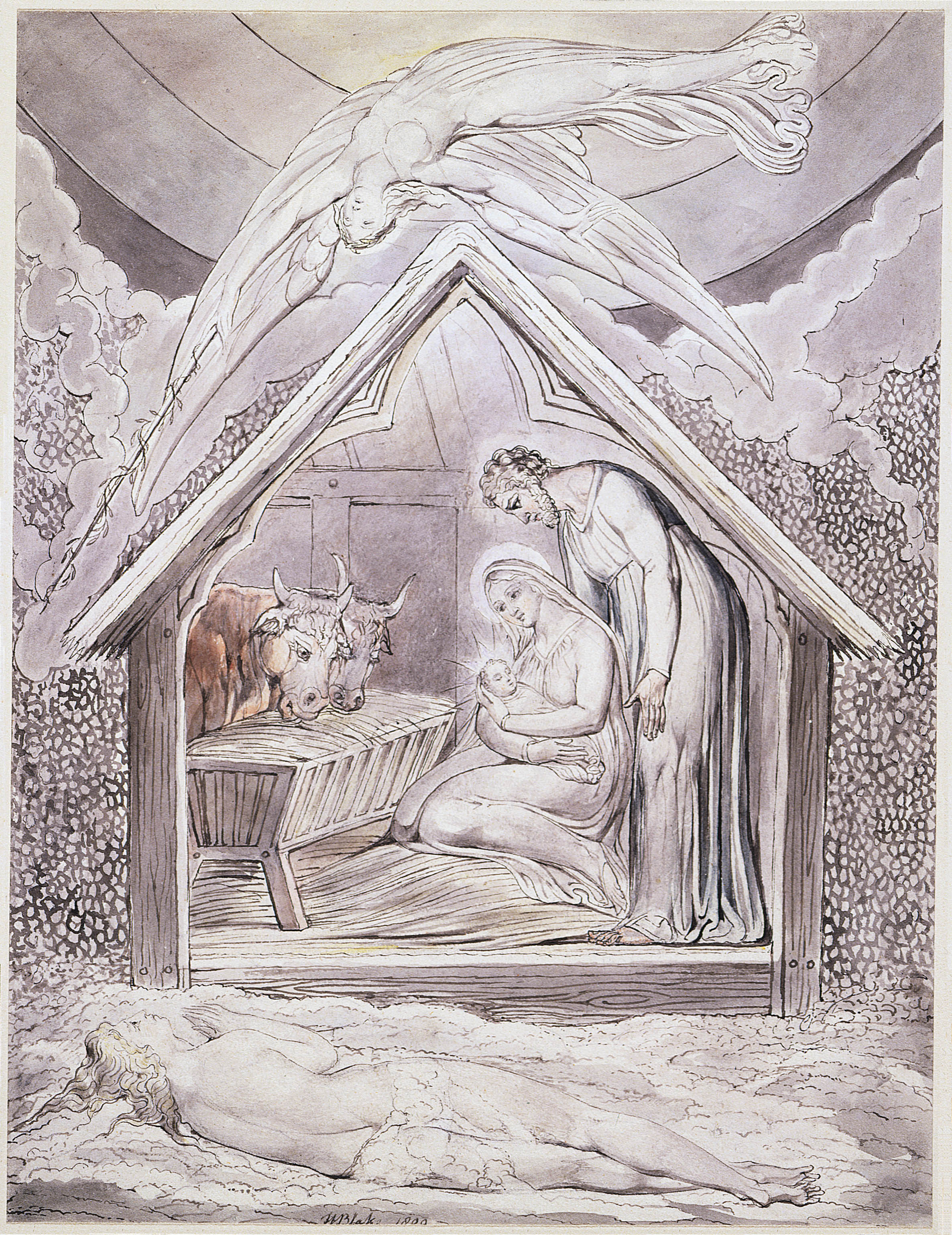
[View this object in the William Blake Archive]
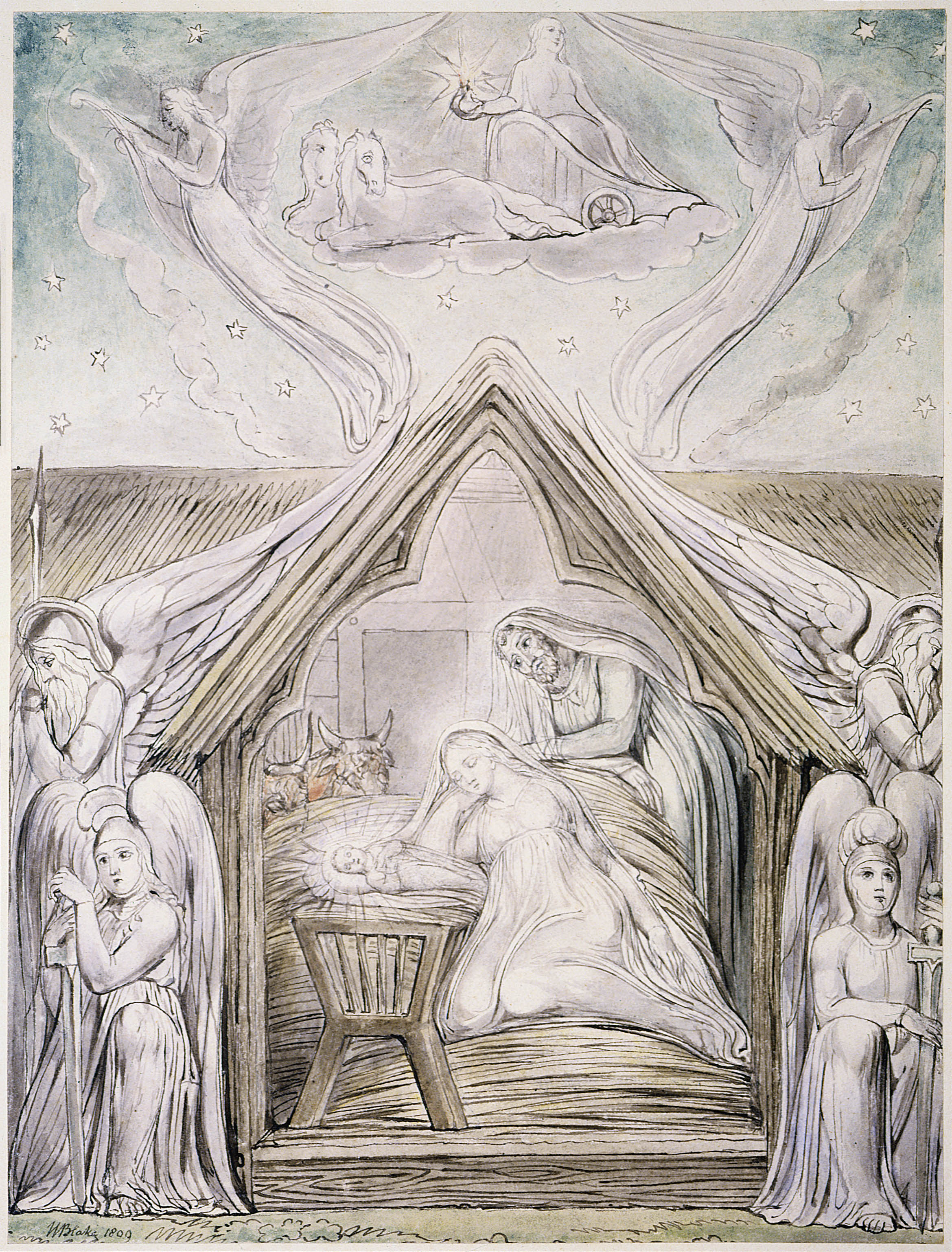
[View this object in the William Blake Archive]
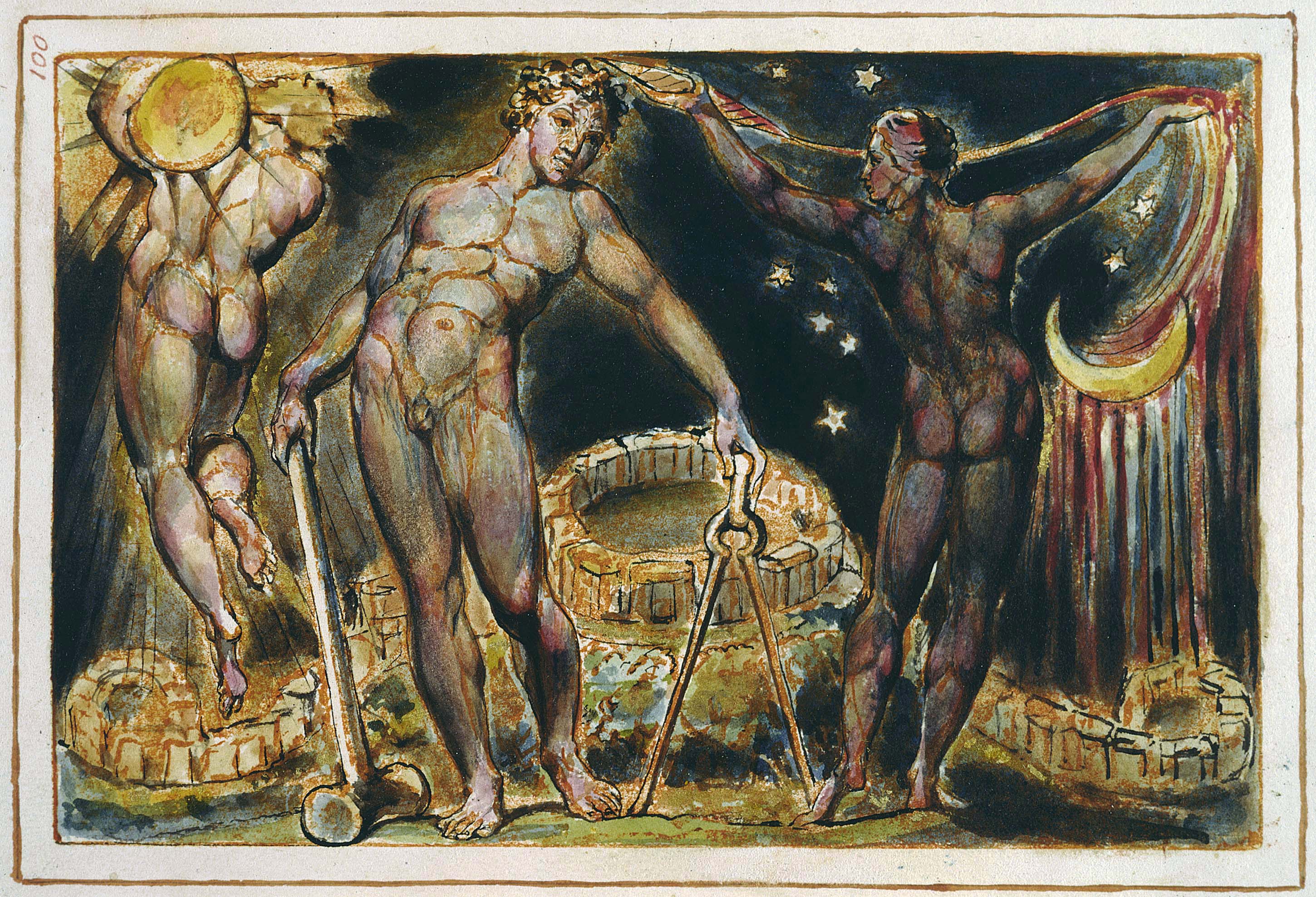
[View this object in the William Blake Archive]
The Creation of Orc; or the Restoration of Cupid Revealed
Knowledge of contextual discourse is naturally requisite for any critical argument, but here I want to focus on one topic among others raised by the figure of Cupid, or the story of Cupid (or Eros) and Psyche. Although significant meanings for the topic have been adduced by various critics, such as, Irene Chayes and Erdman,15↤ 15 See Erdman’s comment in Worrall’s “Blake and the Night Sky I”; “. . .the Cupid and Psyche myth, one of the active strings in Blake’s bow,” 288). I shall argue the assumption that Blake may have intended to restore to Cupid some of his original meanings when creating the figure of Orc.
Interestingly, the plate entitled “Aged Ignorance,” one of Blake’s illustrations of The Gates of Paradise (illus. 8), can serve to introduce the theme. In the design, the aged Urizenlike figure is depicted in an attempt to cut Cupid’s wings. The glasses on his blind eyes seem to emphasize his “ignorance” in a kind of ironical inversion of the conventional notion of “the blind Cupid.” Yet, we come to recognize that this illustration ought more properly to be contextualized within the contemporary discourse of “the selling of Cupid”, or the captivated Cupid (illus. 9a and 9b).16↤ 16 As for this contemporary discourse, cf. Rosenblum 3-9. Henry Fuseli’s illustration of the theme (illus. 9c) exemplifies this discourse, and is important in reference to Blake, for Fuseli inspired and enlightened Blake as an artist as well as an engraver. Evidence that Blake was in fact conscious of this discourse can be found in his design for Cumberland’s Thoughts on Outline, where the discourse itself seems to be betraying its own implied recognition of an oppressive captivity figured in terms of the inverted state of Eros being bound (illus. 10), rather than simply showing the poet-engraver’s rendering of the story.
This significant image of a child restrained from flying, which is embodied in the discourse of the captivated Cupid,17↤ 17 Certainly, it should not be forgotten that there is another possible identification of Orc with Prometheus. stimulates a curious reading of the “Preludium” plate begin page 42 | ↑ back to top
My mother groan’d! my father wept—,
Into the dangerous world I leapt:
Helpless, naked, piping loud:
Like a fiend hid in a cloud.
Struggling in my father’s hands
Striving against my swaddling bands,
Bound and weary, I thought best
To sulk upon my mother’s breast.
(E 28, italics mine)
In addition to the apparent similarity on a visual level (see the design of the plate [illus. 12]), we should note that the description of the struggling infant includes the image of a band, i.e., “my swaddling bands,” an image which has already been examined above; “[w]ho shall bind the infinite with an eternal band? / To compass it with swaddling bands?”
It is not Blake’s ultimate aim to allow an infant “[t]o sulk upon [her] breast.” What the discourse of captivity involves is an implied recognition that the infant, as a representative of fragile and weak existence, has no choice except to live as an obedient child. Yet, this is what is problematic from the point of the rebellious child, who is expected to overthrow such an oppressive authority. Being obedient to the economy of endlessly reproducing the Urizenic family of restriction will only result in repeating the cycle of domestic repression. Blake’s is a protest, therefore, against this dominant economy of circularity in which no progress can ever be made.20↤ 20 On this matter we have an interesting suggestion pointed out by Robert Essick, that “Paine unleashes a metaphor of consumption” in the discussion of the problem of the relationship between Blake and Paine; “‘natural’ feelings were contrasted “to the aristocratic perversion of the family into an artificial system of power relationships” (202). The anguish of the nameless shadowy female, who can be considered as an Oothoon-like figure, i.e., another rebellious child of Los and Enitharmon, is significantly related to this economy of consumption—“Consumed and consuming! / Then why shouldst thou accursed my mother bring me into life?”; or “O mother Enitharmon, wilt thou bring forth other sons? / To cause my name to vanish, that my place may not be found” (E 60). Then the question must be asked; how is the infant to attain to a symbolic power sufficiently formidable to escape,
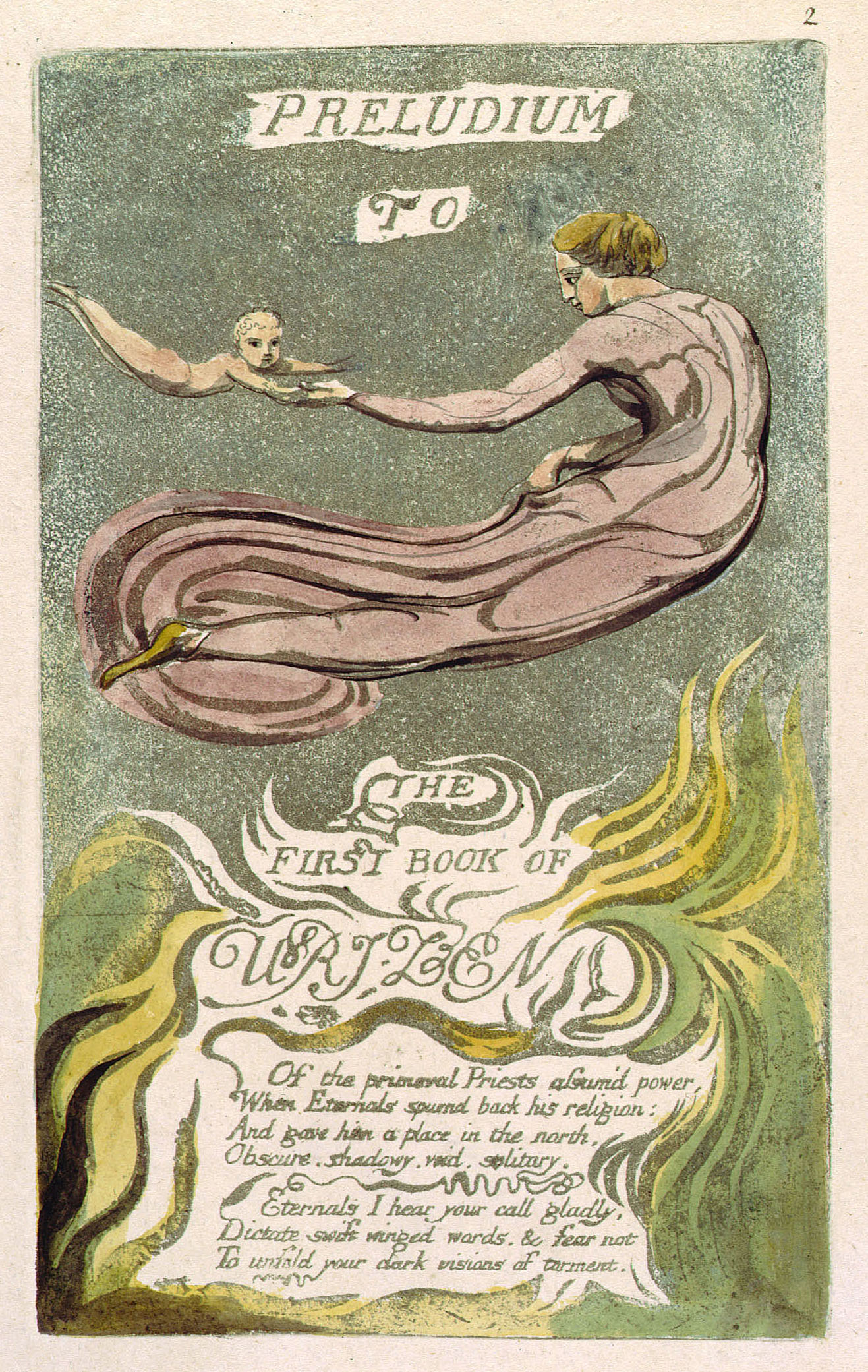
[View this object in the William Blake Archive]
I would like to go back to the icon of compasses positioned over the infant. Among the six designs for Milton’s “Nativity Ode,” one plate, entitled The Flight of Moloch, presents us with the child who leaps out of the furnace as if marching through a cathedral window whose upper portion echoes the compasses shape (illus. 13). In the original text the infant is supposed to die according to the story of the sacrifice to Moloch (“that no man might make his son or his daughter pass through the fire to Moloch”21↤ 21 2 Kings 23: 10. . Here, begin page 44 | ↑ back to top

[View this object in the William Blake Archive]
My assumption is that the characterization of Vulcan as Los is reinforced as a result of Blake’s aspiration to create a formidable infant, though the image of compasses might have been a more important factor in enhancing this aspect. For we can well imagine Blake to have been acquainted with the original significance of Cupid, as the child of Vulcan and Venus, in some versions of ancient mythology. As a possible engraver of Jacob Bryant’s A New System, or An Analysis of Ancient Mythology, Blake would likely have been in a position to observe a reworking of the mythologies.23↤ 23 Cf. Essick, William Blake’s Commercial Book Illustrations 117. This would permit us to suppose that he welcomed the original version of the God of Love, whose figure seems capable of being revitalized as an appropriately subversive force, and who is a child of Vulcan the compasses-tong holder. Bryant phrases his rediscovery in the following way; ↤ 24 Bryant 2: 345. It should be noticed that the same part is cited by Erasmus Darwin in the context of the notion that “the ancient God of love was of much higher dignity than the modern Cupid. He was the first that came out of the great egg of night” in The Botanic Garden: Part I, The Economy of Vegetation, 3rd ed. (London, 1795) 56.
. . . they [the Greek] gave him a material bow, with the addition of a quiver and arrows. Being furnished with these implements of mischief he was supposed to be the bane of the world. . . . This was different from his original character. He is styled by Plato . . . a mighty God: it is said . . . That Eros was the cause of the greatest blessings to mankind. The bows of Apollo and of Diana, were, I believe, formed from the same original.24 [italics original]
Orc as a redeemed Cupid has the potentiality to break the conventional forms of oppression. His subversive aspect, whose most often noted feature is the serpent figure, is now brought to a further level of profundity as revealed by a reconsideration of family relationships.
Although these figures of Orc as Cupid are not immediately visible in his poetry—they must rather be deduced from within contextual discourses—25↤ 25 In his illustrations, nevertheless, there are some designs which clearly includes Cupid figures. once we can conceive the possibility of this interpretation, we will find, at the level of the poetry’s deep structure, the richest connotations of the Orc figure, which complicate and extend the original significance of Cupid. For instance, when we realize that the word “Eros” becomes “rose” by rearranging the letters of the word, the altered significance of the redeemed figure of Cupid / Eros requires as a consequence a thorough re-reading of Blake’s works. This is because the anagram must prompt readers to reinvestigate the still-enigmatic image of the sick rose in relation to the sick Cupid who is degraded in the discourse of the Psyche story, and which may in this way have been intended as a contextual symbol of the repressed emotion of love. More curiously still, in the Notebook, c. 1791-92, just prior to the sick rose poem, there occurs another in which “Love” is winged. Of course, winged Love can easily represent Cupid. The lines are as follows: ↤ 26 Stevenson 158-59.
Love . . .
Always is to joy inclined,
Lawless, winged and unconfined,
And breaks all chains from every mind.26
Here, intriguingly, “winged” “Love” is described as “lawless,” which can be seen to have political implications if we agree to trace the Cupid-Orc figure in the figure of “Love.” Orc may well represent the contextual revolutionary ethos, begin page 45 | ↑ back to top and Blake may equally well be expressing his radicalism by way of the refiguring of Cupid. My assumption here, which I recognize needs further demonstration, is that “Unconfined Love” can share the same foundation as the figure of the unconfined Orc, and that for Blake the emotional emancipation of Love could be equated with the emancipation of the human spirit from political repression. I hope, however, that this discourse of liberty, seen in the light I have demonstrated here, will lead to a recognition of the deeper levels of significance within Blake’s entire mythology, since Orc, hitherto veiled in Blake studies as an original figure of Cupid, now stands revealed as the subversive figure of Love, a breaker of psychic and, by implication, social chains.
Works Cited
Beer, John. Blake’s Visionary Universe. Manchester: Manchester University Press, 1969.
Behrendt, Stephen C. “Blake’s Illustrations to Milton’s Nativity Ode.” Philological Quarterly 55 (1976): 65-95.
Blake, William. The Notebook of William Blake. A Photographic and Typographic Facsimile. Edited by David V. Erdman with the assistance of Donald K. Moore. Oxford: Clarendon Press, 1973.
—. The Complete Poetry and Prose of William Blake. Ed. David V. Erdman, commentary by Harold Bloom. New York: Doubleday, 1988.
Bryant, Jacob. A New System, or An Analysis of Ancient Mythology. 3 vols. 1775-1776, 2nd ed. Rpt. ed. Burton Feldman. Garland Publishing, Inc., 1979.
Butler, Marilyn. Romantics, Rebels & Reactionaries: English Literature and its Background 1760-1830. Oxford: Oxford University Press, 1981.
Butlin, Martin. The Paintings and Drawings of William Blake. 2 vols. New Haven and London: Yale University Press, 1981.
Chayes, Irene. “The Presence of Cupid and Psyche.” In Blake’s Visionary Forms Dramatic. Eds. David V. Erdman and John E. Grant. Princeton NJ: Princeton University Press, 1970. 214-43.
Damon, S. Foster. A Blake Dictionary. 1965. Ed. Morris Eaves. London: Thames and Hudson, 1973.
Dörrbecker, D. W., ed. The Continental Prophecies. By William Blake. London: William Blake Trust, Tate Gallery, 1995.
Erdman, David V. The Illuminated Blake. New York: Dover Publications, 1974.
Erdman, David V. and John Grant, eds. Blake’s Visionary Forms Dramatic. Princeton, NJ: Princeton University Press, 1970.
Essick, Robert N. “William Blake, Thomas Paine, and Biblical Revolution.” Studies in Romanticism 30 (1991): 189-212.
—. William Blake’s Commercial Book Illustrations: A Catalogue and Study of the Plates Engraved by Blake after
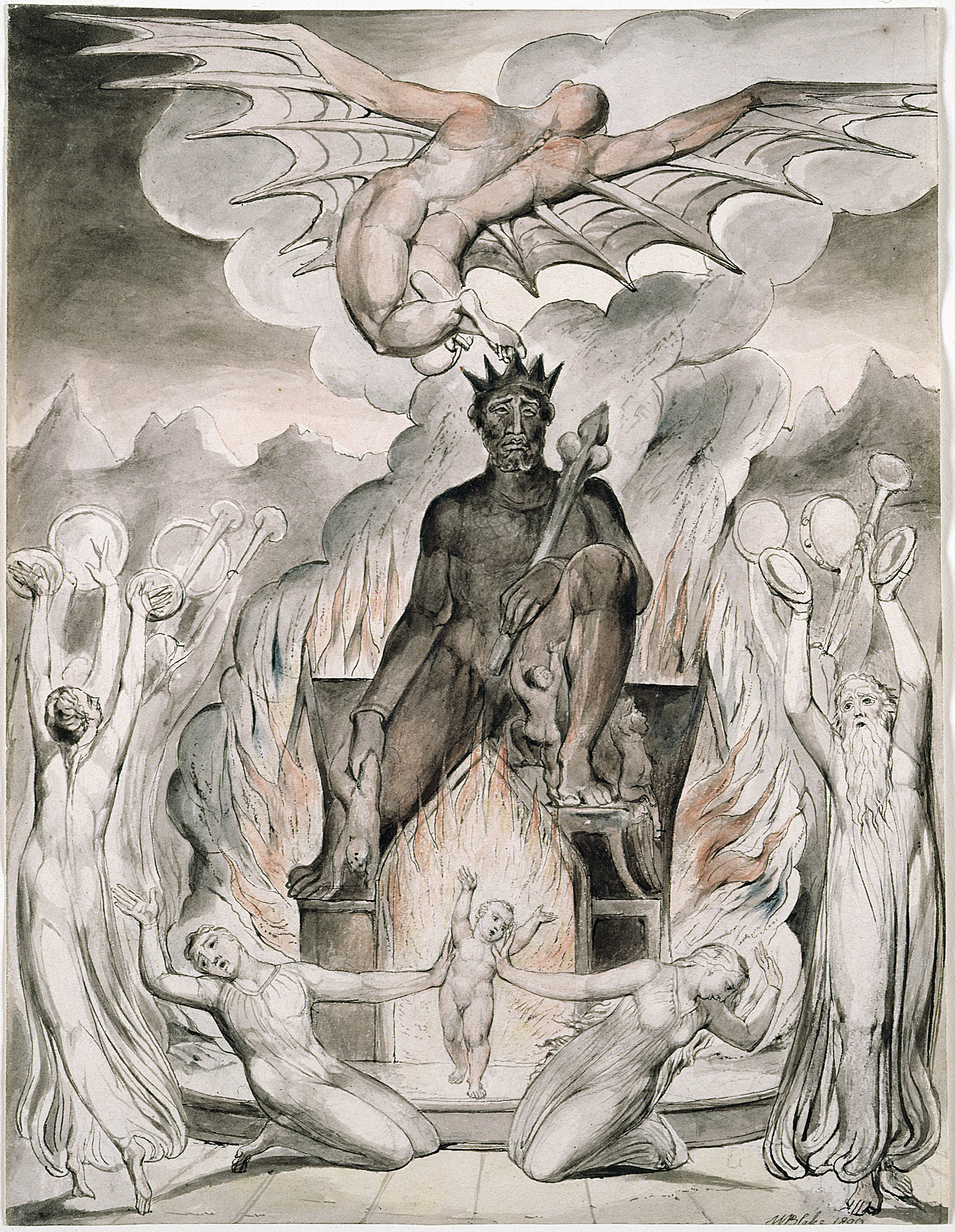
[View this object in the William Blake Archive]
Hagstrum, Jean. William Blake: Poet and Painter. Chicago: University of Chicago Press, 1964.
Mee, Jon. Dangerous Enthusiasm: William Blake and the Culture of Radicalism in the 1790s. Oxford: Oxford University Press, 1992.
Mitchell, W. J. T. Blake’s Composite Art. Princeton, NJ: Princeton University Press, 1978.
Rosenblum, Robert. Transformations in Late Eighteenth Century Art. Princeton, NJ: Princeton University Press, 1967.
Stevenson, W. H., ed. Blake: The Complete Poems. 2nd ed. London: Longman, 1989.
Sutherland, John. “Blake and Urizen.” In Blake’s Visionary Forms Dramatic. 244-62.
Tolley, Michael J. “Europe: ‘to those ychain’d in sleep.’” In Blake’s Visionary Forms Dramatic. 115-45.
Worrall, David. “Blake and the Night Sky I: The ‘Immortal Tent.’” Bulletin of Research in the Humanities 84 (1981): 273-95.
—. The Urizen Books. By William Blake. London: William Blake Trust, Tate Gallery, 1995.

